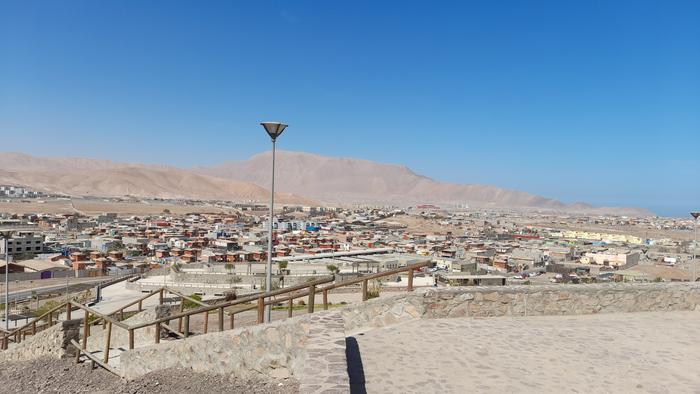In the parched expanse of Chile’s Atacama Desert, a significant breakthrough in water resource management is emerging. Researchers are exploring the potential of fog harvesting as a sustainable solution to address the acute water scarcity affecting urban settlements, especially in rapidly growing areas such as Alto Hospicio. This unique approach capitalizes on a climate phenomenon that many have overlooked, illuminating paths toward a more resilient future in arid regions.
The Atacama Desert, recognized as one of the driest places on Earth, receives less than a millimeter of rain annually. The paradox of life in this hostile environment lies in the hidden reservoirs of water stored in underground rock layers, existing since the times when the region was recharged up to 17,000 years ago. The dependence on these ancient aquifers has defined the water landscape, yet water scarcity remains a pressing concern.
To tackle this challenge, local researchers have turned their eyes to the fog that blankets the region. Fog harvesting is a technique where fine water droplets suspended in the air are collected and channeled for use. Dr. Virginia Carter Gamberini, an assistant professor at Universidad Mayor, emphasizes the transformative potential of this method. Her research team has conducted rigorous studies to assess whether fog harvesting could provide an alternative water supply for informal urban settlements, thereby significantly improving living conditions.
The mechanics behind fog harvesting are surprisingly simple yet effective. Fog collectors consist of mesh nets strategically positioned to capture the tiny droplets. When fog passes through the mesh, water droplets adhere to the fibers, coalescing into larger droplets that cascade down into collection containers. This passive system functions without requiring any energy input, making it not only environmentally friendly but also economically viable for local communities.
In a year-long field study conducted in Alto Hospicio, researchers evaluated the effectiveness of fog collection in this unique urban environment. The findings were illuminating: within a 100 square kilometer radius of the municipality, daily yields of fog water harvesting ranged between 0.2 to 5 liters per square meter. The true potential of this method was showcased during the peak fog season in August and September, highlighting remarkable yields of up to 10 liters per square meter per day.
Alto Hospicio, which has seen a dramatic influx of residents—many of whom are part of informal settlements—is particularly suitable for fog harvesting. Around 10,000 individuals live in these areas, with a mere 1.6% connected to the municipal water supply. Most residents rely on sporadic water deliveries via trucks, resulting in significant inequities regarding access to this precious resource. The implications of this study are profound; the collection and usage of fog water represent a critical opportunity to enhance stakeholders’ quality of life.
Importantly, the researchers underline that fog harvesting should not be viewed as a singular solution but rather as a complementary strategy within a robust urban water management framework. By integrating this technique alongside traditional water sources, urban planners can diversify water supplies and cushion against climate change’s unpredictable impacts. This multi-faceted approach, combined with well-designed infrastructure for storage and distribution, can adeptly address the pressing needs of urban populations in arid regions.
The potential applications for collected fog water are vast. In addition to supplying drinking water, this resource could be directed towards irrigation efforts for public green spaces, thus enhancing urban greenery and biodiversity. Furthermore, in a region where traditional agriculture is hampered by water shortages, fog water presents a promising avenue for supporting soil-free agricultural practices, potentially yielding significant quantities of leafy vegetables and other crops.
Nevertheless, the feasibility of implementing fog harvesting systems in diverse locations hinges upon various geographic and atmospheric preconditions. Research indicates that optimal fog collection requires specific combinations of fog density, favorable wind patterns, and elevation. Consequently, these prerequisites must be meticulously assessed in prospective sites to ensure the viability of fog water collection endeavors.
Dr. Carter’s aspiration is clear: integrating fog harvesting into national and regional water management policies could drastically improve urban resilience against both climate change and rapid population growth. The issue of water scarcity is not confined to the Atacama; thus, expanding research into fog harvesting could serve as a template for mitigating water challenges in other urban contexts worldwide.
As urbanization continues to impose strain on water resources, innovative solutions like fog harvesting are crucial. It is a method that embodies the ethos of sustainability, offering practical applications that reflect creative responses to the exigent challenges faced by communities around the globe. With ongoing evaluations and studies, the promise of fog harvesting may yet become a pivotal part of urban living in arid climates.
The study highlights the intersection of natural phenomena and human ingenuity. By exploring how climate conditions can be harnessed for community benefits, researchers are not just addressing a water crisis—they are contributing to shaping sustainable urban futures. The solutions derived from Alto Hospicio’s experience could serve as a guiding principle for cities around the world grappling with similar issues.
Through these research efforts, a renewed hope emerges for communities in water-scarce environments, suggesting pathways to unlocking untapped resources that nature provides, possibly heralding a new era of sustainability and resilience in urban water supply systems.
Subject of Research: Fog harvesting as a complementary water resource in urban areas
Article Title: Unlocking the fog: Assessing fog collection potential and need as a complementary water resource in arid urban lands -The Alto Hospicio, Chile Case
News Publication Date: 20-Feb-2025
Web References: DOI
References: Frontiers in Environmental Science
Image Credits: Dr Virginia Carter Gamberini
Keywords: fog harvesting, water scarcity, Atacama Desert, Alto Hospicio, urban water management, sustainable agriculture, climate resilience, environmental science.




